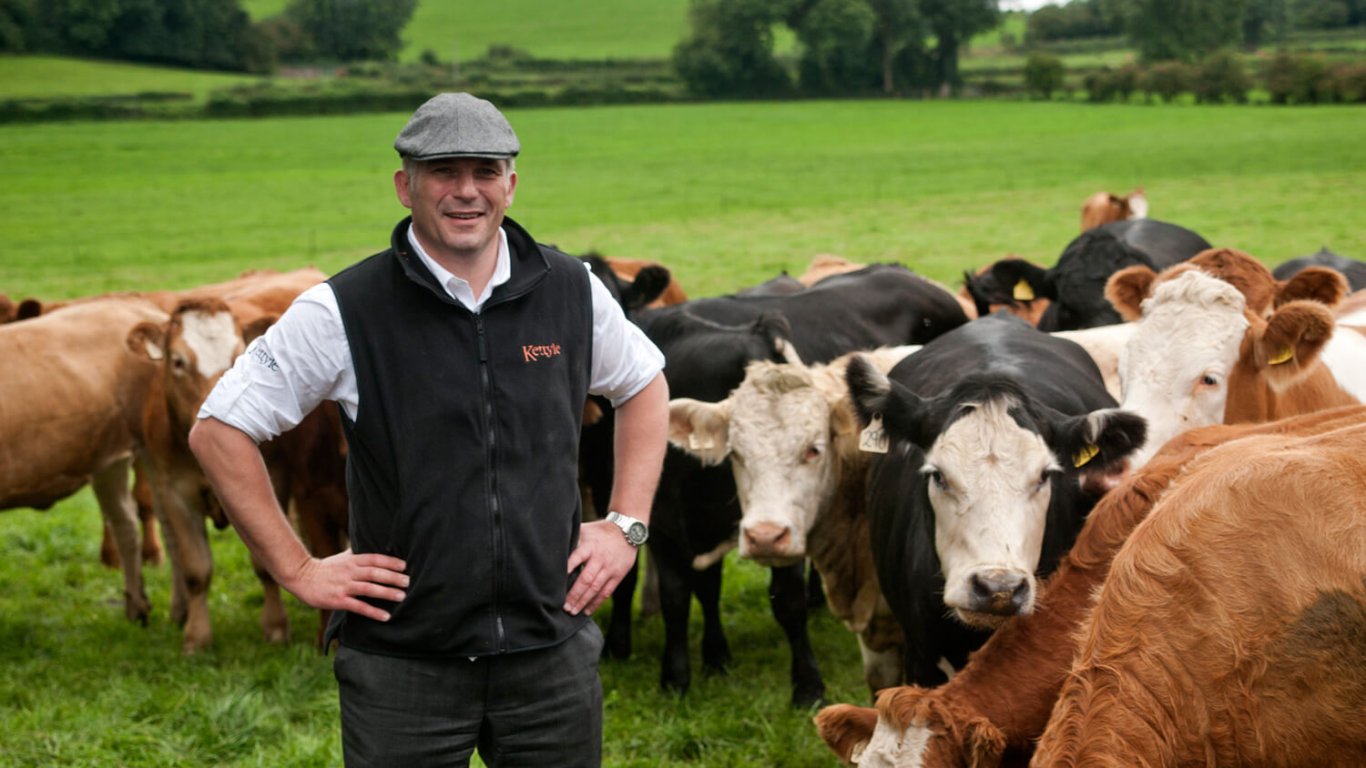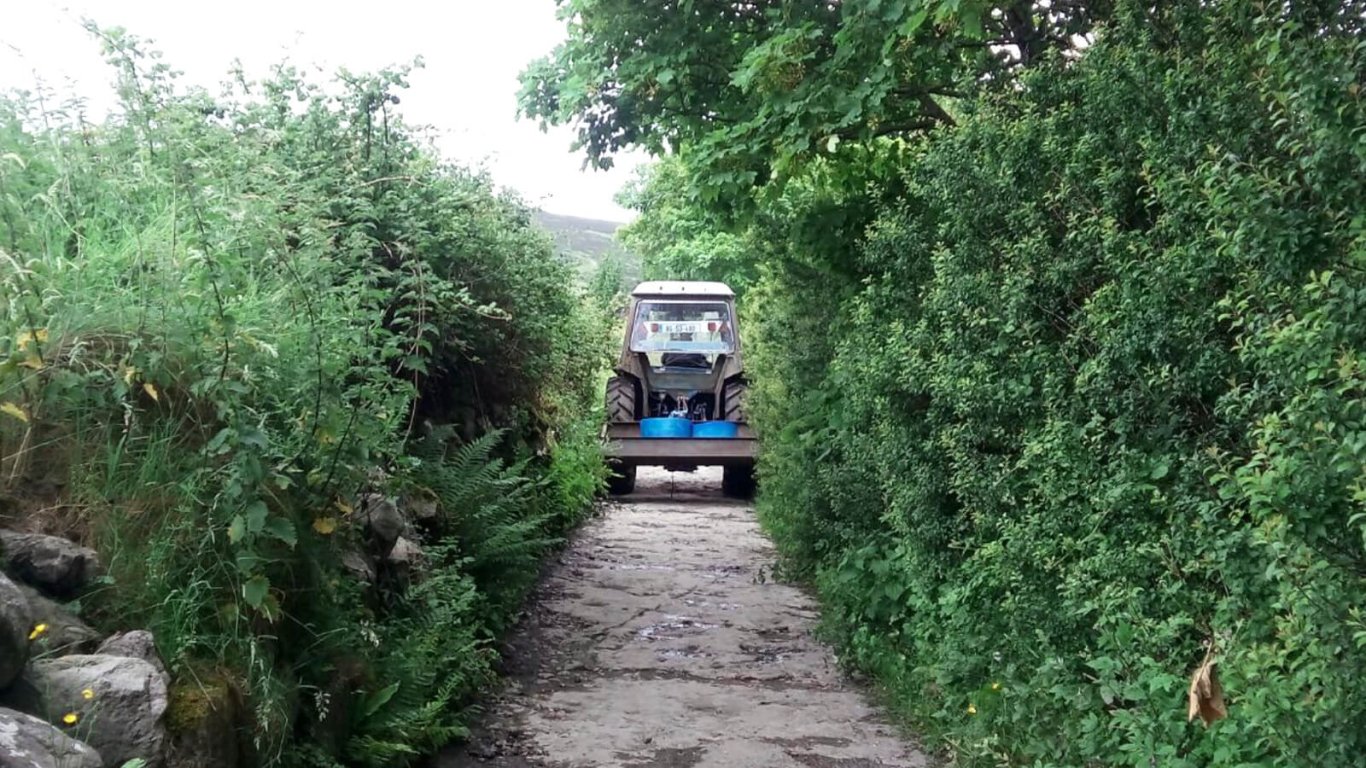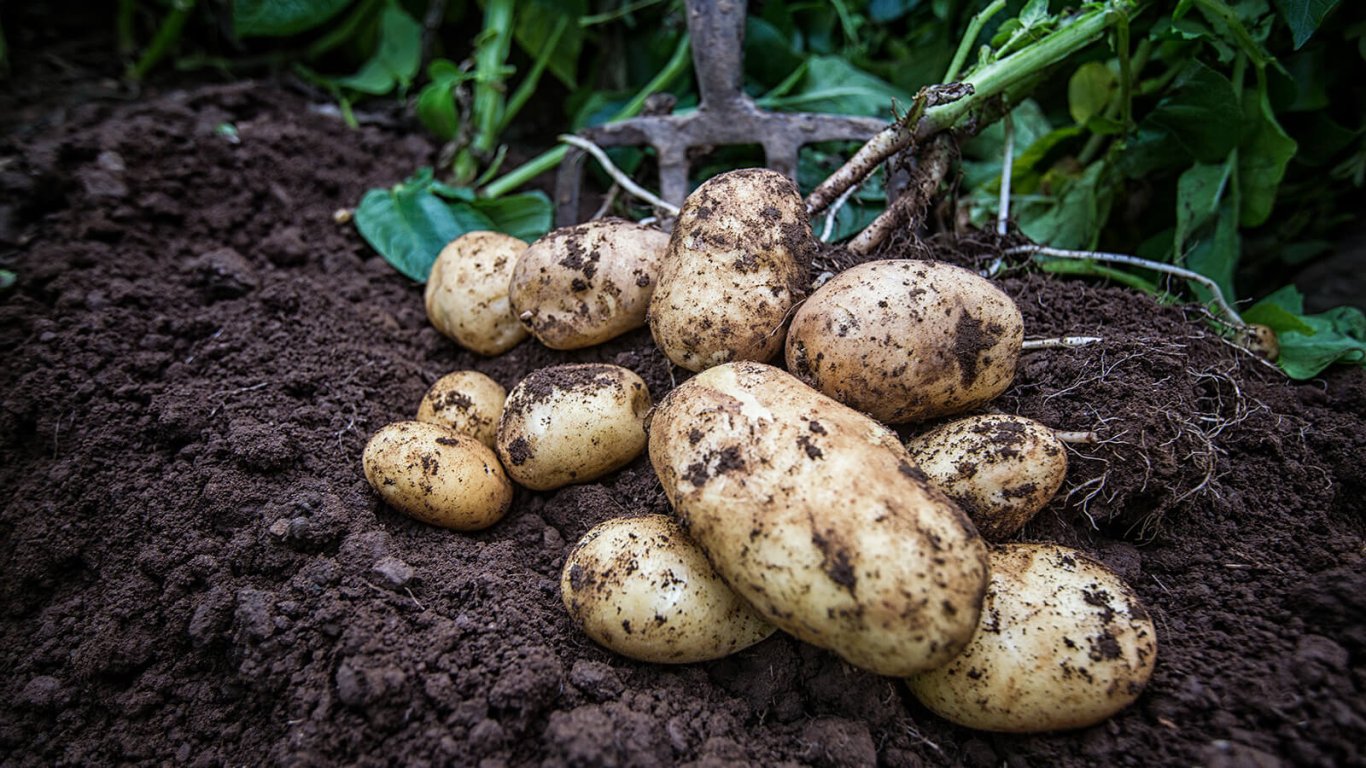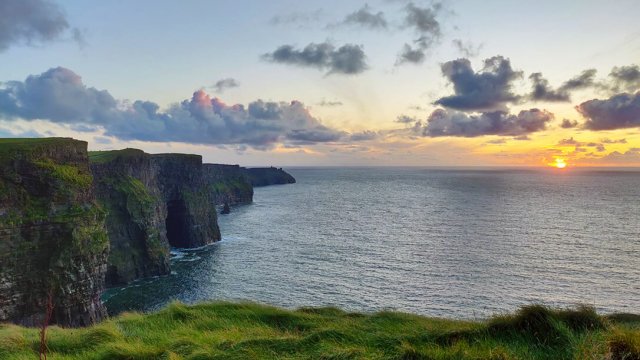Hi, I'm Derry 👋
I'm the Content Manager at Vagabond Tours.
Nowadays, I live on a smallholding with my wife and kids in the same beautiful county of Wicklow where I grew up.
I can’t play in the hay bales anymore like in the olden days — well, I can't tell anyone that I do! — but my extended family run a large market garden where I do jobs like preparing vegetable beds, sowing seeds, picking polytunnel tomatoes and felling timber.
Several of my close friends run farms — one is a beef farmer and another comes from a dairy farm.
We love every aspect of country living; no two days are the same. We count ourselves so lucky to live it.
Here's my guide to farming in Ireland...
Farming In Ireland Today: The Stats
🚜 Farming in Ireland is dominated by smallholdings. The average size of a farm in Ireland is just 81 acres. To compare, the average American farm is 443 acres and Australia's average is 1,990 acres!
🐄 There are 7 million cattle, 3.9 million sheep and 1.6 million little piggies in Ireland
🥩 Ireland produces 617,000 tons of beef annually. We export 87% of it, earning €1.85 billion in the process.
🐮 Ireland exports 189,000 live beef cattle each year. This trade is worth approximately €100 million.
🧈 Ireland has a truly global dairy sector. Milk products are one of Ireland’s biggest exports, with 85% being exported.
👩🌾 Ireland’s army of 18,000 dairy farmers milk almost 1.35 million cows on a daily basis.
🥛 Ireland produces just over 8 million litres of milk per year and approximately 225,000 tonnes of butter. I’m pretty sure I account for most of the butter on my toast!
My Country Childhood
Even though I later left Ireland and travelled around the world, I've been lucky enough to return to where I grew up: living in the countryside in Wicklow.
Growing up, my parents grew a lot of their own food and kept poultry. They still do!
While our family weren’t farmers in the traditional sense, our lives were dominated by nature and the farming seasons. Many of my schoolmates came from farming households.
I loved my country childhood. With my dad, I helped dig up 'spuds'. With my mum, I collected fresh duck eggs. With friends, I ran through the fields of wheat and, later in the summer, made forts out of square hay bales.
A Day in the Life of an Irish Farmer
Farming in Ireland is a tough but hugely rewarding way of life.
The level of commitment and dedication it takes to be a farmer still amazes me. It is often said that farmers will call a vet for a sick animal long before they call a doctor for themselves.
This, I can tell you, is 100% true.
A day in the life of an Irish farmer is very similar to that of a VagaGuide…

Jump out of bed at 6 am and run outside into the open air; check the weather and check the vehicles; then make sure everything is looking good and get ready for the day ahead.
British Holstein Friesian cows — the famous black and white ones — are the most common type of cow you will see in Ireland.
Each dairy cow needs to be milked twice daily, every day, 365 days a year. That includes Christmas Day!
Once they are milked in the morning, the rest of the day’s work begins. This work is dependent on the season but generally, it means fixing/maintaining tractors and machinery.
Farmers make sure the land is in optimum condition and also — most importantly — make sure the animals are well fed and cared for.Animals bring a certain magic wherever they are. Cows are beautiful, docile creatures. Each has a different personality.
Believe it or not, most farmers know each and every one of their cattle by name!
Farming in Ireland During Summer
On the farms where I live, the season dictates what work needs to be done.

Early summer is silage season. By May or June, grass has reached a certain length and richness. It is cut, left on the ground for 12-24 hours in warmer weather, then baled or stored in a pit.
Covered through the summer months, this grass ferments into what Irish farmers call ‘silage’. This process acidifies the silage — a form of fermentation — which preserves it.
Silage can then be fed to cattle, sheep and other cud-chewing animals. When wintertime rolls around in Wicklow, there are lots of happy — perhaps slightly drunk — cows feeding on yummy, fermented grass.
If you’re taking a small-group tour of Ireland in the months of May and June, you’ll notice tractors and trailers filling country roads. That's because they are ferrying loads of silage back and forth.
After the silage season, there is a lull in activity. July is all about fertilising the land, getting ready for the second cut of silage. This usually happens in August.
Find out more about Summer in Ireland.
Farming in Ireland in Winter and Spring

Come January and February, cows are brought inside to keep them safe and warm. Many are getting ready to go to the maternity ward!
This is my kids' favourite time to be in the countryside in Wicklow. There are lots of new baby calves, foals and lambs around to play with.
For Irish farmers, however, lambing and calving is no joke. It means 2am wake-up calls almost every night. Technology allows farmers to monitor the four-legged mammas and make sure no animal is in difficulty.
Once calving is finished, herds are put back out to grass around March. This is always a big day on my friend's beef farm. The cows get extremely excited. It takes them a day or two to calm down and readjust to being outside!
And before you know it, we’re back around in May, playing “Dodge the Tractor on the Road!
Ireland's Native Cow Breeds
Although they are extremely common, black-and-white Holstein Friesians are not a native breed.
Two native breeds that you may run into on a Vagabond small-group adventure tour are the Kerry or the Dexter varieties.
Dexters are the smallest of all European cattle breeds. They are extremely versatile. Dexters produce delicious, lean beef but can also give rich milk. Traditionally, Dexters were used to pull ploughs and carts in Ireland.
The Kerry is a dairy cow. It is considered one of the oldest cattle breeds in Europe. If you have been to Ireland, you may have come closer to the Kerry cow than you realise. Its milk is used to make the delicious Murphy’s Ice Cream from Dingle.
Other cow breeds native to Ireland include the Irish Moiled Cow, the Droimeann, and the White Park.
Find out more about some of the animals you will see while touring Ireland
Sheep Farming in Ireland
If you have been to Ireland, you will have noticed lots of sheep on your travels. It sometimes seems that there are more sheep in Ireland than people!

Sheep farming happens all over Ireland but predominates along the west coast.
Sheep are sturdy animals that can safely navigate this rougher terrain. The rockier ground in the west of Ireland is trickier for cattle.
Why Are Sheep in Ireland Different Colours?
You may have noticed that most sheep look the same! The colours on their fleeces indicate who they belong to.
Once they go wandering — which they do on a regular basis — the poor farmer whose job it is to find them will know which animal is theirs.

Sheep farmers across Ireland usually own a sheepdog or two. Sheepdogs guide the sheep whichever way the farmer wants them to go. A demonstration of sheepdogs doing their work is a sight to behold. They are truly amazing.
Many Vagabond and Driftwood Tours include the option to experience a real Irish working sheep farm.
See what happens on a sheep farm tour in Ireland
Other Types of Farming in Ireland
As everyone knows, Ireland is famous for the colour green. This is no accident! When you visit, you will see how lucky we are to have such green, lush fields.

This fertility means Ireland is ideal not just for rearing animals but also for farming crops, vegetables and fruits.
We love our spuds — what we call potatoes — in Ireland. Our climate is perfect for growing potatoes as well as other root vegetables. You’ll notice that we eat potatoes with almost every meal!
Our most common cereal crop is spring barley. Aside from animal feed and seed, barley is grown for malting our world-famous whiskeys and stout beers. Ireland also produces winter barley, oats and wheat.
👋 That's It From Me!
Well, thanks for joining me down on the farm.
I've enjoyed showing you around farming in Ireland and telling you about my semi-agricultural background.
What Next?
Join me on a Vagabond or Driftwood Small-Group Tour of Ireland so you can see for yourself!











